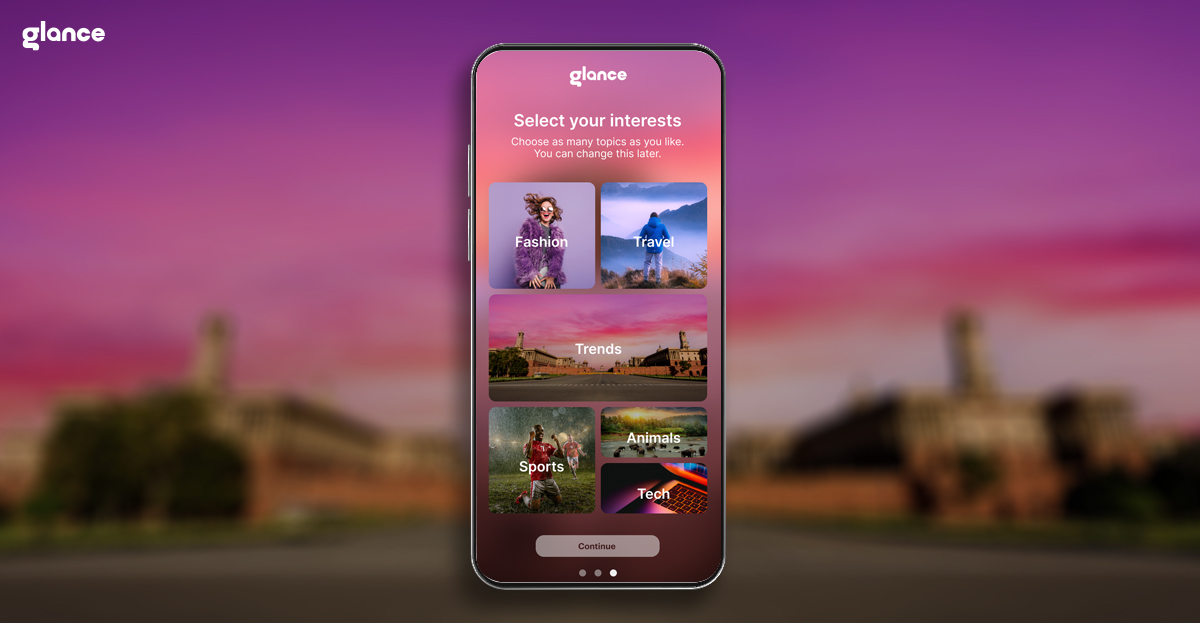7 Advanced Future Technology Trends You Will Watch in 2030

Technology is evolving at an astonishing pace, and the coming years are set to bring innovations that will redefine our daily lives. From autonomous robots to neural interfaces, the future promises breakthroughs that not only streamline tasks but also transform the way we interact with the world.

As we ride the wave of the digital revolution, we often think of “What technology will come in the future?” “What are the biggest technology trends in 2030?” or “What is the next best technology?”
So, here we compiled the top seven future technology trends that will dominate by 2030 and become the technology that will dominate the tech’s next decade.
Future Technology Trends to Watch by 2030
1. Robots Making Decisions

One of the most transformative trends is the rise of robots that not only perform tasks but also make decisions autonomously. In manufacturing, healthcare, and logistics, advanced robots powered by sophisticated AI algorithms are being designed to assess situations, adapt to changing environments, and execute decisions in real time.
According to Statista, the global robotics market is projected to exceed $250 billion by 2030, with decision-making capabilities playing a significant role in driving efficiency. These intelligent systems are expected to reduce human error by up to 30% in industrial applications, streamlining operations and optimizing production processes.
Challenges with Robotics
- Ensuring ethical decision-making and accountability in autonomous systems.
- Integration complexity with existing workflows and human teams.
- Cybersecurity risks as robots become targets for hacking or manipulation.
2. Spatial Computing for Natural Interaction

Spatial computing is another future technology trend that will transform digital interactions by blending virtual and physical worlds into a single, seamless experience. This technology uses sensors, cameras, and advanced processing to enable digital content to overlay your real-world environment.
By 2030, spatial computing is predicted to be a $100+ billion market, with applications ranging from immersive gaming to advanced remote collaboration. Imagine interacting with your digital workspace as if it were an extension of your home, or having virtual objects respond to your gestures and movement in real time. This isn’t just about better graphics—it’s about creating natural, intuitive interactions that make technology feel like a seamless part of your surroundings.
Challenges with Spatial Computing
- High hardware costs and technological barriers to mass adoption.
- Privacy concerns due to extensive sensor and camera data collection.
- Standardization and interoperability across platforms remain unresolved.
3. AI-to-AI Communication

While most of us interact with AI through chatbots or virtual assistants, one of the less visible but powerful future technology trends is AI-to-AI communication. In this scenario, intelligent systems talk to each other to coordinate tasks, share insights, and optimize processes—all without human intervention. This inter-AI collaboration will streamline everything from logistics to data management, leading to smarter, faster decision-making across industries. For instance, imagine a fleet of delivery drones that autonomously reroute themselves based on weather data shared by other AI systems. This trend is set to make technology more efficient, responsive, and integrated.
Challenges with AI Communication
- Lack of transparency and explainability in autonomous AI interactions.
- Potential for cascading errors or unintended consequences in inter-AI communication.
- Regulatory gaps around AI autonomy and accountability.
Did you know? According to statista, The market size is expected to show an annual growth rate (CAGR 2025-2031) of 26.60%, resulting in a market volume of US$1.01tn by 2031.
4. AI TRiSM: Trust, Risk, and Security Management

As AI becomes more pervasive, ensuring its ethical and secure use becomes critical. AI TRiSM (Trust, Risk, and Security Management) is an emerging discipline that focuses on managing the risks associated with AI deployment. This trend will see the development of frameworks and tools designed to monitor, assess, and mitigate issues like bias, privacy breaches, and system vulnerabilities. With organizations worldwide increasingly relying on AI, robust TRiSM protocols will become essential for maintaining user trust and ensuring compliance with regulatory standards.
Challenges with AI TRiSM
Developing universally accepted standards and frameworks for AI governance.
Balancing innovation speed with rigorous risk management protocols.
Managing the complexity of AI systems for continuous monitoring and assessment
5. Quantum Computing Integration
Quantum computing is one of the most promising technologies on the horizon. Though still in its infancy, quantum computing is set to revolutionize the way we solve complex problems by leveraging the principles of quantum mechanics.
Industry forecasts suggest that the quantum computing market could grow to over $15 billion by 2030. When integrated with AI, quantum computing could enable the processing of vast data sets and the solving of problems that are currently intractable for classical computers. Imagine breakthroughs in cryptography, optimization, and simulation that could transform industries ranging from finance to healthcare.
Challenges with Quantum Computing
- Immaturity of quantum hardware and the need for error correction mechanisms.
- High costs and specialized expertise required for development and maintenance.
- Security implications of quantum algorithms potentially breaking current encryption.
6. Edge Computing with 5G/6G Networks

Edge computing is transforming the digital landscape by moving data processing closer to the source—reducing latency and increasing efficiency. Combined with the rollout of 5G and the forthcoming 6G networks, edge computing is expected to revolutionize how devices communicate and process information in real time.
As per forecasts the global edge computing market is expected to grow at a compound annual growth rate (CAGR) of 36.9%. For us, this means faster, more responsive applications—from seamless virtual reality experiences to instant personalized recommendations on your smartphone. With edge computing, data is processed locally rather than being sent to a distant cloud, ensuring that technology can keep pace with the demands of real-time applications.
Challenges in Edge Computing
- Infrastructure investment needed for widespread edge deployment.
- Increased attack surface due to distributed computing nodes requiring robust security.
- Managing data privacy and compliance in decentralized environments.
7. Biotechnology and Genetic Engineering Advances

Advancements in biotechnology and genetic engineering are opening new frontiers in medicine, agriculture, and environmental conservation. According to grand view research, the global biotechnology market was valued at $1.55 trillion in 2023 and is projected to grow at a CAGR of 13.96% from 2024 to 2030. Techniques like CRISPR-Cas9 are enabling precise editing of genetic material, offering potential cures for genetic disorders and the development of disease-resistant crops. By 2030, these future technology trends in this sector are expected to be more refined and widely adopted, contributing to improved health outcomes and food security.
Challenges in Bio Technology
- Ethical concerns regarding genetic modification and long-term effects.
- Regulatory hurdles and public acceptance barriers.
- Potential ecological risks from unintended gene flow or mutations.
Current Technology Trends Shaping Your Daily Experience
While the future technology trends paint an exciting picture for 2030, current technology trends are already making a significant impact on our daily lives. Here are some of the key trends:
Shopping with AI: Personalized online shopping experiences are transforming the retail industry and enhancing customer satisfaction. For instance, platforms like our Glance have introduced AI-powered shopping experiences that allow users to visualize outfit recommendations on personalized avatars directly from their smartphone lock screens.
Gaming with AR/VR: Immersive gaming experiences are becoming the norm as augmented and virtual reality technologies create more engaging and interactive worlds.
Content Creation with Generative AI: From art and music to writing, Gen AI is revolutionizing creative industries by generating high-quality, human-like content.
Smart Home Integration: Internet of Things (IoT) devices are seamlessly connecting your home, automating tasks and creating a more convenient living environment.
Autonomous Vehicles: Self-driving cars and drones are already reshaping transportation, offering safer, more efficient travel solutions.
Wrap up
The technology landscape is evolving at breakneck speed, and the trends we see today are only the beginning. As we look forward to 2030, advancements like decision-making robots, spatial computing, AI-to-AI communication, and neural interfaces promise to revolutionize every aspect of our lives. Coupled with current trends that enhance everyday convenience—like AI-driven shopping, AR/VR gaming, and smart home integration—the future of technology is set to be a blend of efficiency, creativity, and profound human connection.
Whether you’re an early adopter or simply curious about what’s next, these trends invite you to reimagine the possibilities of technology. They are not just innovations; they are building blocks for a future where technology works for you, making life more connected, sustainable, and exhilarating.
FAQs
What technology will be in 2050?
By 2050, technology will be deeply integrated into daily life, driven by advances in AI that may create intelligent systems capable of co-existing with humans, handling complex tasks, and managing infrastructure. Smart autonomous systems, AI assistants, personalized robots, immersive digital experiences, and breakthroughs in sustainable energy will reshape how people live and work.
What will the year 3000 look like?
Predicting the year 3000 is speculative, but possibilities include advanced cosmic-scale engineering, significant human evolution, and exploration of higher dimensions. Humanity might achieve advanced civilizations, harnessing energy from multiple galaxies and exploring concepts beyond current understanding.
What are the 7 advanced technologies?
While there is no single universally agreed list, seven advanced technologies widely recognized for driving innovation include Artificial Intelligence (AI), Quantum Computing, Biotechnology, Nanotechnology, Robotics, Augmented and Virtual Reality (AR/VR), and the Internet of Things (IoT). These technologies are transforming industries, enabling smarter systems, automation, and new ways to interact with the world.
What are the five technologies of tomorrow?
The five technologies most often highlighted as shaping the near and long-term future are Artificial Intelligence (AI), Quantum Computing, Biotechnology and Genetic Engineering, the Internet of Things (IoT), and Green Energy solutions. These innovations are transforming industries, enhancing daily life, and providing smarter, more sustainable ways to live and work.




